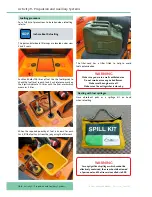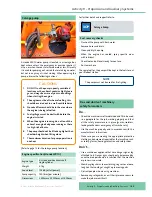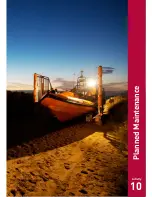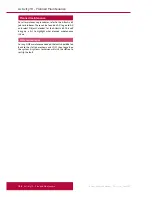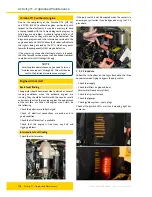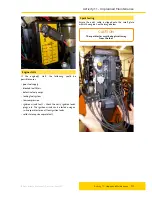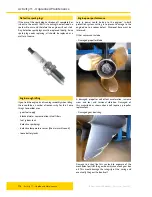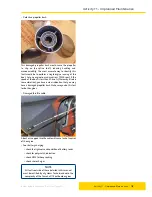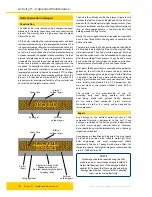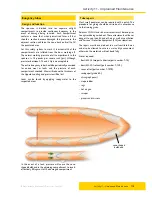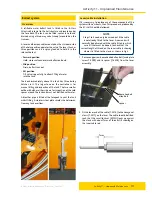
102
Activity 9 - Propulsion and Auxiliary Systems
B Class Atlantic 85 Manual – First Issue, June 2017
Activity 9 - Propulsion and Auxiliary Systems
Engine alarms
Engine alarms will only sound when the ECU detects the
outboard is running outside of the set parameters.
Fuel contamination alarm
The fuel contamination alarm is an intermittent loud beep
every second with the blue alarm button flashing at the
same rate. The alarm will continue like this until you have
fixed the problem (or turned the power off). The small red
port and starboard LED overheat lights will indicate which
engine’s fuel is contaminated by also flashing in time.
If the fuel contamination alarm sounds, first check
the primary fuel filters under crew seats 2 and 3 for
contamination. If no contamination is found in primary
fuel filters and conditions permit, remove the hood to look
for contamination in the engine (secondary) fuel filter.
If contamination is found in either primary filter, the fuel
lines can be changed over to the opposite tank using fuel
change over block – refer to the fuel system diagram in
this section. The engine must be powered off and isolated
at the appropriate main isolator breaker. Once completed,
restart engine to confirm the alarm has been reset.
Engine overheat alarm
The overheat alarm is a constant audible tone, along with
the blue alarm button and the port or/and starboard
overheat LEDs illuminated constantly (depending which
engine is overheating).
When overheating is detected by the engine control
system, it protects the engine by:
• Reducing the rpm to a “safe” level automatically.
• Limiting the maximum rpm to less than 2000 rpm.
The engine performance will suffer, but it is designed so
that the risk of engine damage is negligible and the boat
may return to port.
If the overheat alarm is sounding, the following actions
need to be taken:
• Place throttle leaver to neutral.
• Check for water pressure from the water outlet
(tell tale), if no water pressure is found, switch engine
off immediately.
• Tilt the engine, if conditions permit, check the
inlets and the water outlet (tell tale), for blockages.
Refer to item 8 on page 73.
• If water pressure is constant leave engine to see if
alarm disappears.
• If alarm does not disappear, switch off engine and allow
to reset.
• If alarm continues, use one engine only.
NOTE
The alarm for overheating will only stop if the engine
cools down or if the engine is stopped.
Fuel contamination alarm
Alarm tone intermittent - 1 second apart
Blue button and red LED(s) - 1 second apart
Engine overheat alarm
Alarm tone constant
Blue button and red LED(s) constant
Summary of Contents for Atlantic 85
Page 1: ...B CLASS ATLANTIC 85 MANUAL...
Page 2: ......
Page 4: ......
Page 8: ......
Page 11: ...Activity 2 Personal Competencies Personal Competencies Activity 2...
Page 31: ...Activity 3 Launch and Recovery Launch and Recovery Activity 3...
Page 37: ...Activity 4 SAR Unit Handling and Seamanship SAR Unit Handling and Seamanship Activity 4...
Page 51: ...Activity 5 Search and Rescue Search and Rescue Activity 5...
Page 57: ...Activity 6 Communications Communications Activity 6...
Page 67: ...Activity 7 Navigation Navigation Activity 7...
Page 70: ......
Page 71: ...Activity 9 Propulsion and Auxiliary Systems Propulsion and Auxiliary Systems Activity 9...
Page 106: ......

















